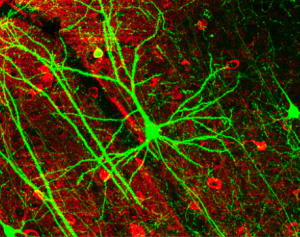The workings of the brain have remained obscure throughout the development of neuroscience, with efforts to probe them often gruesomely coarse and attempts to change them . . . really even worse (from lobotomies to electroshock therapy, just to name the most well-known controversial techniques). That may all soon change.
So far, examining the brain at the cellular level (as opposed to simply checking which region of the brain is electrically active) has been a surprisingly manual task. While other areas of biology have benefited from robotics and automation, the brain was left to the highly trained hands of brain surgeons. After all, the area is sensitive and merits painstaking care – especially since any proper study of the brain requires it to be a living brain.
But I think you can guess by now what researchers at MIT and the Georgia Institute of Technology have managed to do. That’s right: they’ve developed a robotic arm controlled by a cell-detecting algorithm that can identify neurons, see how they are connected, and check out how diseased cells are different from normal cells. It can do this faster and with greater accuracy than any human researcher would be able to. You can read about the details of the technique here. The same researchers are trying to extract the contents of the cells.
How much will this really tell us about how the brain works? Well, that’s the real question, isn’t it. To what extent is our ability to think solely dependent on the way neurons are wired together. It could be that research like this will give us a sufficiently complete picture to answer the question, or maybe we’ll still be left searching for deeper information.
Still, the robot capable of doing this is a robot that can target problem cells and either remove them or supply medication to them. Perhaps we’ll finally see an end to coarse procedures or the wholesale medication of a mostly functional brain, and therefore a reduction in side-effects that can often be worse than the original disease.

